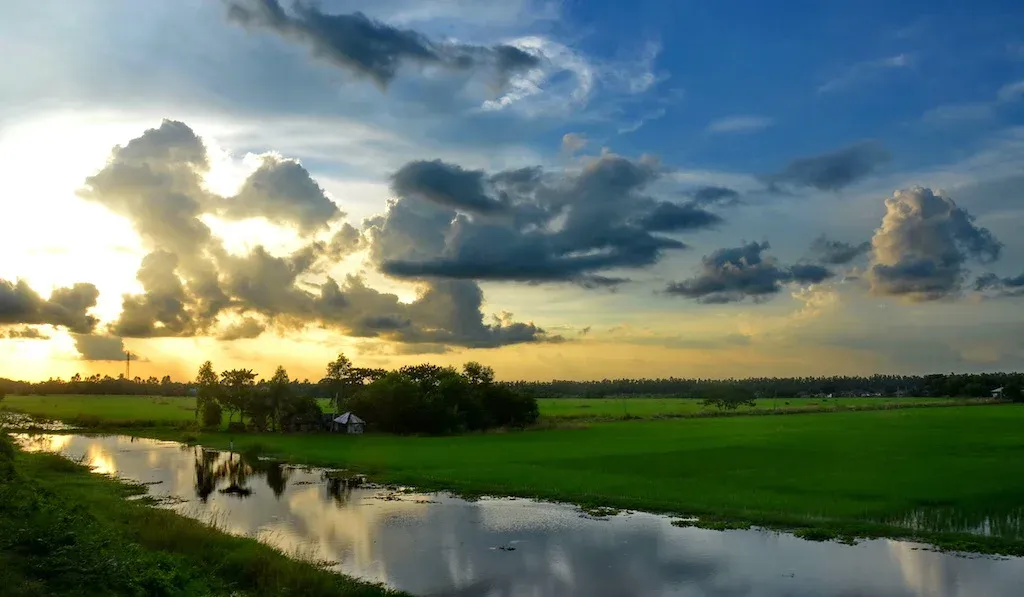Sounds of Seasons: The Influence of Nature and Weather on Raga Selection

The rich tapestry of Indian classical music is intricately woven with the essence of nature and the changing seasons. From the delicate melody of spring to the intense fervor of monsoon and the reflective calm of winter, the selection of ragas in this ancient musical tradition is deeply influenced by the natural rhythms and characteristics of each season. Rooted in the profound connection between human emotions and the environment, these ragas evoke a spectrum of feelings, from joy and ecstasy to introspection and longing, bringing listeners closer to the vibrant palette of nature’s ever-changing moods.
Spring, with its vibrant hues and the promise of new beginnings, finds resonance in ragas like Basant and Bahar. The gentle notes of these ragas capture the rejuvenating spirit of the season, infusing compositions with a sense of hope and optimism. The lilting melodies, adorned with intricate ornamentations, reflect the blooming flowers, the chirping of birds, and the gentle warmth of the sun, creating an atmosphere of exuberance and vitality.
As spring gives way to the scorching heat of summer, ragas such as Malhar and Megh bring respite with their cooling and contemplative tunes. These ragas are imbued with the anticipation of the monsoon, carrying within them the essence of waiting, longing, and the eventual relief brought by the first showers. The meandering notes, interspersed with subtle variations, mirror the play of clouds, the distant rumble of thunder, and the earth’s eager anticipation of the rain, eliciting a sense of serenity and yearning in the listener.
With the arrival of the monsoon, ragas such as Miyan ki Malhar and Surdasi Malhar come to life, encapsulating the raw power and the relentless downpour of rain. These ragas, with their complex and evocative compositions, embody the tumultuous emotions of love, separation, and intense longing. The intricate interplay of notes mirrors the tempestuous nature of the monsoon, reflecting the clash of emotions that the season often stirs within the human heart.
The transition to autumn introduces ragas like Bhairavi and Bageshri, evoking a sense of introspection and nostalgia. As the leaves change their colors and the air carries a subtle crispness, these ragas, with their soulful and meditative tones, create an atmosphere of introspection and tranquility. The subtle variations and intricate phrasings resonate with the melancholic beauty of the changing landscapes, capturing the bittersweet essence of transition and the fleeting nature of life.
Winter, with its cool serenity and ethereal beauty, finds expression in ragas like Yaman and Malkauns. The gentle yet profound notes of these ragas reflect the quietude and contemplation of the season, as nature prepares for a period of rest and rejuvenation. The deep, resonant tones evoke a sense of introspection and solemnity, echoing the hushed stillness of frost-covered landscapes and the quiet contemplation of the human spirit in the face of nature’s dormant grace.
Through the intricate interplay of musical notes, Indian classical music not only celebrates the beauty of nature but also serves as a conduit for emotional expression and spiritual contemplation. The selection of ragas, intricately tied to the changing seasons and weather patterns, showcases the profound interconnectedness between human emotions and the natural world. As listeners immerse themselves in the melodic journey of these ragas, they are invited to experience the profound depths of joy, longing, tranquility, and introspection, thus forging a timeless bond between music, nature, and the human soul.
Each raga, carefully crafted to mirror the nuances of nature’s ever-shifting temperament, carries within it a story of the seasons, interwoven with the joys and sorrows of life. The melodic progression and improvisations within each raga offer performers the opportunity to evoke the essence of the seasons, allowing for a deeply personal and emotive musical experience. Moreover, these ragas serve as a testament to the enduring influence of nature on human creativity, inspiring musicians to delve into the depths of their emotions and harness the power of music to express the profound beauty and complexity of the world around them.
The intricate relationship between Indian classical music and the seasons stands as a testament to the enduring bond between humanity and the natural world. As ragas weave stories of love, longing, joy, and contemplation, they serve as a timeless reminder of the ever-changing yet eternal essence of nature. Through their resonant melodies and intricate compositions, these ragas invite listeners to embark on a musical journey that not only celebrates the beauty of the changing seasons but also provides a profound reflection of the human experience in harmony with the rhythms of the natural world.





